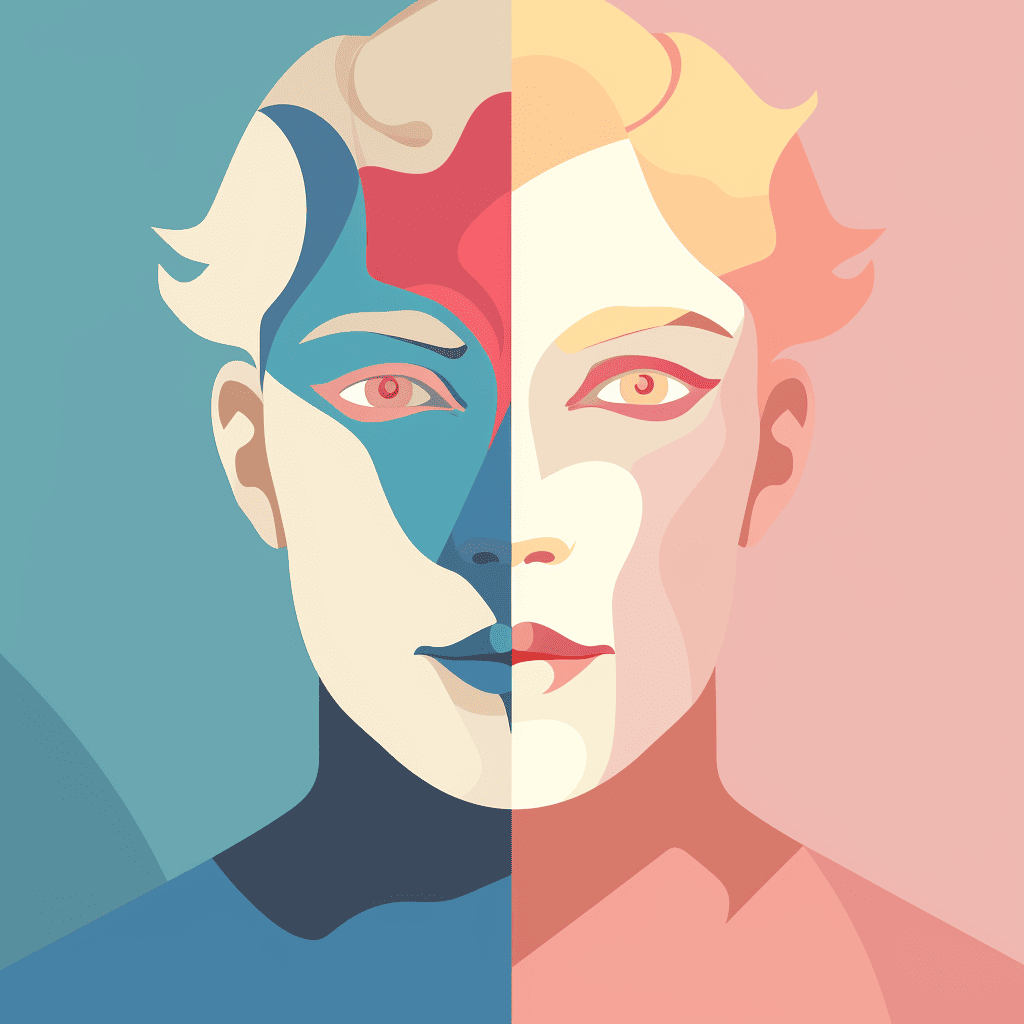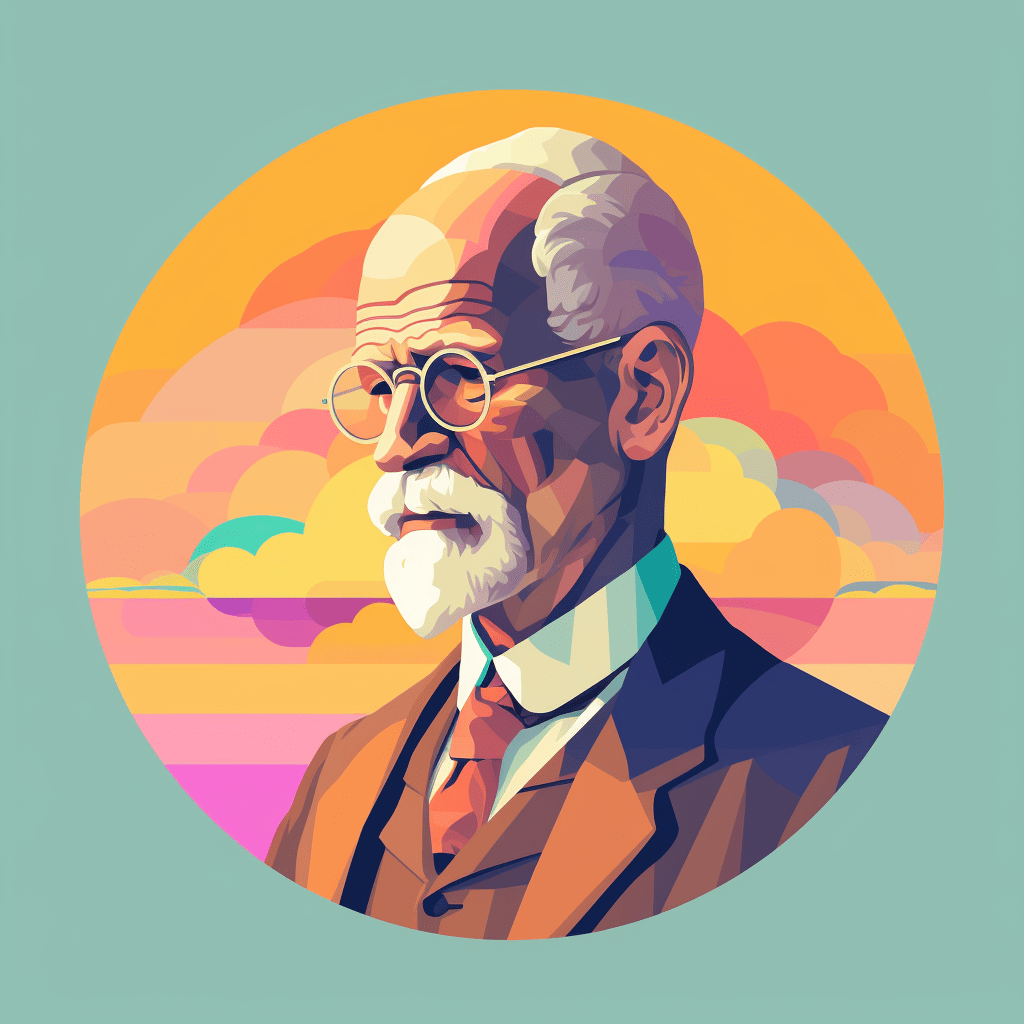Have you ever wondered why sometimes you can’t resist grabbing a cookie, even when you know it's not healthy? Or why you decide to study for a test even when you’d rather be playing video games? These decisions might have something to do with three parts of our personality that a famous psychologist named Sigmund Freud talked about. He called these parts the Id, the Ego, and the Super-Ego.
Freud created the psychoanalytic theory of personality, which is a model to describe why we are the way we are, and it includes three aspects: the Id, the Ego, and the Super-Ego.
In this article, we’re going to explore and make clear the complex relationship between the Id, Ego, and Super-Ego, and how these parts work together to influence how we behave and make decisions. We’ll look into what each of these parts does, how they interact with each other, and why it’s useful for us to understand them.
What are the Id, Ego, and Super-Ego?
There are many different theories about personalities. Some of these theories were developed over 100 years ago, and are still hotly debated today. Basically, no one knows exactly why we are the way we are, or what to call it, but looking at these theories can help us better understand ourselves and our motivations.
One of the first psychologists that came up with a theory of personality was Sigmund Freud.
Sigmund Freud was a very important figure in the world of psychology. He lived between 1856-1939 in Vienna, Austria, and he came up with some big ideas that people still talk about today. One of his most famous ideas is about how our personalities are made up of these three different parts:
- The Id is the part of us that wants things right now, like that cookie, and doesn't care about rules or consequences.
- The Ego is like the decision-maker. It tries to find a balance between what the Id wants and what’s actually a good idea in real life.
- The Super-Ego is like our inner rule-book. It tells us what is right and wrong and can make us feel guilty when we break the rules.
All of these parts live (at least partly) in our unconscious mind, which is the part of our mind that we aren't usually aware of. It's what happens automatically, including everything from storing memories to making us instinctively pull away when we put our hand on a hot stove.
A Deeper Look at the Id

Imagine you're in a candy store, and you see a huge, colorful lollipop that you just have to have. You don't care how much it costs or that your parents said no more sweets today—you want it now! That powerful, immediate desire is coming from a part of your personality that Sigmund Freud called the Id.
What is the Id?
The Id is the most basic, instinctual part of us. It’s like the little kid inside our minds. It wants what it wants, and it wants it now. The Id isn’t concerned with rules, logic, or what’s good for us in the long run. It’s driven by the pleasure principle, which means it seeks pleasure (like enjoying that lollipop) and avoids pain (like the feeling of hunger).
The Role of the Id in Personality
The Id is where our most raw and primal desires live. It’s all about satisfying basic needs and urges, like hunger, thirst, and comfort. When you were a baby and cried the moment you were hungry or uncomfortable, that was your Id in action. It's not selfish or bad—it's a natural part of who we are.
Examples of the Id in Action
- Sneaking a cookie before dinner, even when you know you’re not supposed to.
- Yelling when you are angry, instead of talking calmly about what’s bothering you.
- Choosing to play video games all night, ignoring the fact that you have school or work the next day.
How the Id Develops
The Id is the first part of our personality to develop. It’s there from the day we are born. As infants, we cry when we are hungry or need a diaper change. We don't think about whether it's a good time for our parents; we just want our needs met immediately. That’s the Id doing its job, helping us survive by making sure our basic needs are communicated loudly and clearly.
A Deeper Look at the Ego
Let's go back to that candy store for a moment. You want the lollipop, and your Id is shouting, “Get it now!” But then, another part of you starts thinking. It reminds you that you have only a little bit of money left, and you were saving it to buy a gift for your friend’s birthday. This thoughtful, decision-making part of you is what Sigmund Freud called the Ego.
What is the Ego?
The Ego is like the referee in a game between what you want to do (your Id) and what you should do (your Super-Ego, which we’ll learn about next). It operates on the reality principle. This means that the Ego understands the rules of the real world and tries to find a balance between our desires and what is actually possible and sensible.
The Role of the Ego in Personality
The Ego is the part of our personality that helps us make decisions. It’s like a wise friend who understands that we can’t always have what we want right when we want it. The Ego considers the real world—things like rules, other people’s feelings, and safety. It’s the part of us that comes up with a plan that considers both what we want and what makes sense.
Examples of the Ego in Action
- Deciding to buy a smaller, less expensive treat at the candy store so you can still get your friend a birthday gift.
- Taking a deep breath and counting to ten before responding when you are really angry.
- Setting an alarm and going to bed at a reasonable time, even though you want to keep playing video games, because you have a test tomorrow.
How the Ego Develops
The Ego starts to develop when we’re toddlers, around the age of two or three. This is when we begin to learn that we can’t always get what we want when we want it. We start to understand rules and the reality around us, like waiting our turn or not touching something hot. The Ego is like our inner grown-up, helping us navigate the world in a thoughtful way.
A Deeper Look at the Super-Ego
Now, let’s imagine a different scene. You’re at a friend's house and you spot a shiny, new toy that you’ve always wanted. You think about taking it without them knowing, just for a little while. But then, a voice inside your head tells you, "That's not right. Taking something without asking is stealing." This moral compass inside of us, guiding us about what’s right and wrong, is what Sigmund Freud called the Super-Ego.
What is the Super-Ego?
The Super-Ego is like the rulebook or the ideal parent inside our minds. It’s the part of our personality that holds our sense of right and wrong. It's based on the values and morals we’ve learned from our parents, teachers, and society. It's like a coach that is trying to make us into the best person we can be.
The Role of the Super-Ego in Personality
The Super-Ego wants us to be perfect. It’s the part of us that feels proud when we do something good, like telling the truth when we could have lied. But it’s also the part that makes us feel guilty or ashamed when we break the rules or act in a way that we know isn't right.
Examples of the Super-Ego in Action
- Choosing not to cheat on a test, even though it might mean getting a lower grade, because you know cheating is wrong.
- Apologizing to your sibling after you yelled at them, because you feel bad and know it was not a kind thing to do.
- Deciding to spend your free time helping a neighbor with their yard work, because it's a kind and responsible thing to do.
How the Super-Ego Develops
The Super-Ego begins to form around the age of five or six, usually when we start school and are learning a lot about rules and social behavior. It continues to grow as we get older and learn more about the values of our family and society. Think of it as a garden that we keep tending to and shaping as we learn more about what it means to be a good person.
The Interplay of Id, Ego, and Super-Ego

Now that we know about the Id, Ego, and Super-Ego, let's think about how they work together, almost like a team inside our minds. Sometimes, they agree and work smoothly, but other times, they can argue and cause us to feel conflicted. It’s like having a mini-debate inside your head!
How These Components Interact and Conflict
Imagine you’re sitting in class, and you’re really bored. Your Id might be whispering, “This is boring. Let’s doodle on the desk.” Your Super-Ego might respond, “No, that’s against the rules and disrespectful to the school property.” In the middle, your Ego might compromise and say, “How about we pay attention now and doodle on our own paper after class?”
This is an example of the interplay—or the way the Id, Ego, and Super-Ego talk to each other and influence our decisions.
The Concept of Defense Mechanisms
Sometimes the arguments between these parts of our personality create stress or anxiety. To help deal with this, our Ego uses something called defense mechanisms. These are like mental tricks that help us feel better and keep things in balance. For example, if we do something we know is wrong, we might try to forget it happened or make excuses for why it’s not really our fault. This is the Ego trying to reduce the guilt that the Super-Ego is making us feel.
Real-life Examples of the Interplay
- Deciding to eat just half of the chocolate bar now and save the other half for later, after a mini-debate between your Id (which wants to eat it all now) and your Super-Ego (which reminds you about healthy eating).
- Choosing to do your homework before playing video games, a decision guided by your Ego, which balances the Id’s desire to play immediately and the Super-Ego’s sense of responsibility.
Criticisms of Id, Ego, and Super-Ego Theory
Sigmund Freud’s ideas about the Id, Ego, and Super-Ego are fascinating and have had a huge impact on psychology. However, they have also sparked a lot of debates and disagreements. Let’s dig a little deeper into why some people have different opinions about these concepts.
Lack of Empirical Evidence
One of the main criticisms is the lack of empirical evidence supporting Freud's theories. This means that his ideas were mostly based on his observations and thoughts, rather than on experiments and data that others could check and repeat. Today, scientists use strict methods to test theories, but Freud’s ideas are hard to prove with this kind of testing. Critics argue that without this solid evidence, Freud's theories are more like interesting ideas than scientific facts.
Gender Bias
Freud lived in a different time, with different ideas about men and women. Critics say that his theories were heavily focused on males and made some assumptions about women that we wouldn’t agree with today. For example, Freud thought that boys and girls went through different psychological stages as they grew, and he described women in ways that many people now find outdated and unfair. These critics feel that Freud’s theories may not equally apply to everyone because of this bias.
Cultural Limitations
Freud's theories were based on his experiences and observations in early 1900s Europe, which means they were rooted in a specific culture and time. Some critics argue that these theories might not make sense for people from other cultures around the world. People in different places can have very different ideas about what’s right and wrong or what a person should want in life, so Freud's concepts of the Id, Ego, and Super-Ego might not fit everyone’s experience.

Modern Views and Adaptations
While Freud’s ideas were groundbreaking in his time, psychology has grown a lot since then. New research and discoveries have led to new theories about how our minds work. Many modern psychologists respect Freud as a pioneer but believe that we need updated theories that consider our current understanding of the brain and human behavior. For example, today’s psychologists might talk more about specific brain regions and how they communicate, or they might use terms like “self-control” instead of Ego and Id.
The Influence on Other Fields
Interestingly, while some psychologists have moved away from Freud's specific ideas, they remain popular in other areas like literature, art, and philosophy. People in these fields often find Freud’s ideas useful for understanding characters in a story or the deeper meanings in a piece of art, even if they aren’t used as scientific facts.
What are Some Possible Applications?
Despite the criticisms and debates about Freud’s ideas, they have not been forgotten. In fact, his concepts of the Id, Ego, and Super-Ego are still talked about and used in different ways today. Let’s explore how these old ideas are still making waves in our modern world.
In Therapy and Counseling
Some therapists today use concepts similar to the Id, Ego, and Super-Ego when they help people work through their problems. For instance, they might help someone become more aware of their impulsive behaviors (like the Id) and find better ways to control them. They might also work on helping people develop a stronger, more rational decision-making process (like the Ego) or address feelings of guilt and shame (related to the Super-Ego).
In Self-Awareness Practices
Understanding the ideas of the Id, Ego, and Super-Ego can be like getting a map of your own mind. Some people use these concepts to become more self-aware, helping them understand why they might react a certain way in a situation and how they can choose to respond differently. For example, recognizing when your Id is pushing you to make a rash decision can help you pause and let your Ego step in to consider the consequences.
In Education and Parenting
Some educators and parents use Freud’s ideas to understand children’s behavior better. Recognizing that a child's Id might be strong during a tantrum, for example, can help adults respond with patience and teaching instead of frustration. They might use strategies to help children develop their own ‘Ego’ skills, like self-control and thoughtful decision-making.
Contemporary Theories
While Freud’s original theories have been critiqued and revised, they inspired many other psychologists to explore the human mind further. Today, there are new theories that expand on Freud's ideas or take them in a different direction. For example, some theories now focus more on how our sense of self develops through relationships with other people, which is a bit different from Freud’s focus on internal conflicts.
Pop Culture References
Believe it or not, you can find Freud’s ideas popping up in movies, books, and TV shows! Characters in a story might represent the Id, Ego, and Super-Ego, and these concepts are sometimes used to add depth to a character’s internal struggles.
Who Is Thinking Test

You may not realize if it is your Id, Ego, or Super-Ego doing the thinking in any given situation. But it can be really helpful to figure that out.
Here are some questions you can ask yourself to help determine which part of you is doing the thinking, which can then help you make more informed decisions.
- Is this thought focused on immediate pleasure or satisfaction?
- (If yes, it might be the Id)
- Am I thinking about the consequences of my actions?
- (If yes, it might be the Ego)
- Is this thought making me feel guilty or like I should be perfect?
- (If yes, it might be the Super-Ego)
- Does this thought involve breaking rules or acting without considering others?
- (If yes, it might be the Id)
- Am I considering a compromise or a realistic solution in this situation?
- (If yes, it might be the Ego)
- Is this thought based on a moral or ethical principle, like fairness or honesty?
- (If yes, it might be the Super-Ego)
- Am I feeling a strong, impulsive desire that I want satisfied right now?
- (If yes, it might be the Id)
- Am I thinking about how my actions will affect my future or the people around me?
- (If yes, it might be the Ego)
- Is this thought related to living up to an ideal standard or avoiding moral failure?
- (If yes, it might be the Super-Ego)
- Does this thought feel like a balanced approach, taking into account my desires, rules, and reality?
- (If yes, it might be the Ego)
Conclusion
We’ve explored Sigmund Freud's captivating ideas about the Id, Ego, and Super-Ego—three parts of our personality that play a big role in how we think, feel, and act. We've learned that the Id is like our inner child, always seeking pleasure and avoiding pain. The Ego is our rational side, acting like a wise friend who helps us make balanced decisions based on reality. And the Super-Ego is our moral compass, guiding us towards what is right and away from what is wrong, according to our values.
We’ve also learned that, even though Freud’s theories are over a century old and have faced criticisms, they are still influential today. They can help therapists in their work, guide us toward better self-understanding, and even pop up in the stories we read and watch!
But most importantly, understanding the Id, Ego, and Super-Ego isn't just for psychologists—it's a tool that we all can use. By asking ourselves questions like the ones we’ve listed, we can become more aware of why we might feel a certain way in a situation and how we can choose to respond differently. It's like having a guidebook to our own minds, helping us navigate our lives more thoughtfully and empathetically.
So, as we wrap up, we encourage you to keep exploring. How do you think the balance of your Id, Ego, and Super-Ego affects your daily life? Can you spot these parts of your personality in action? And how might understanding them help you grow as a person?



